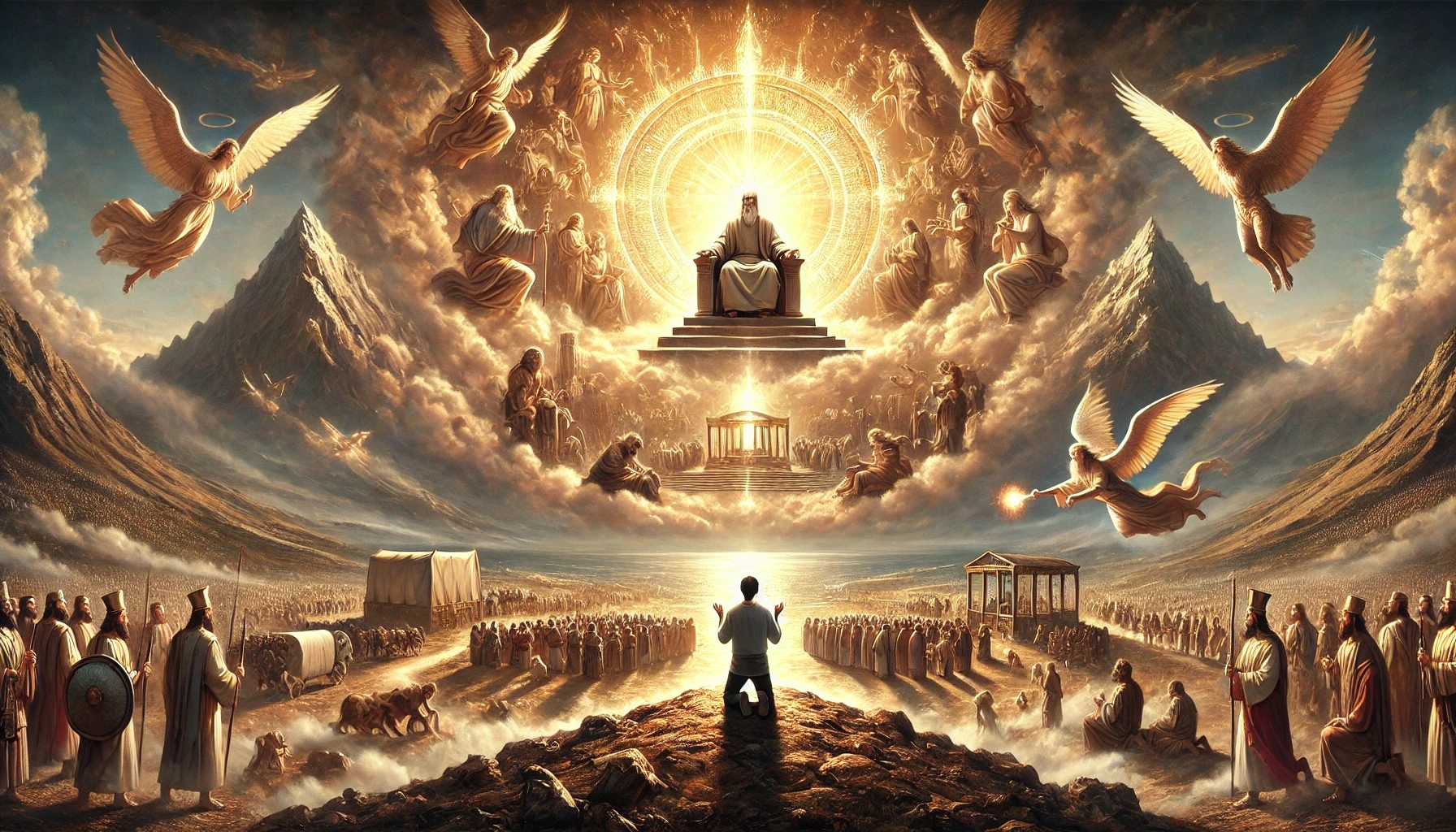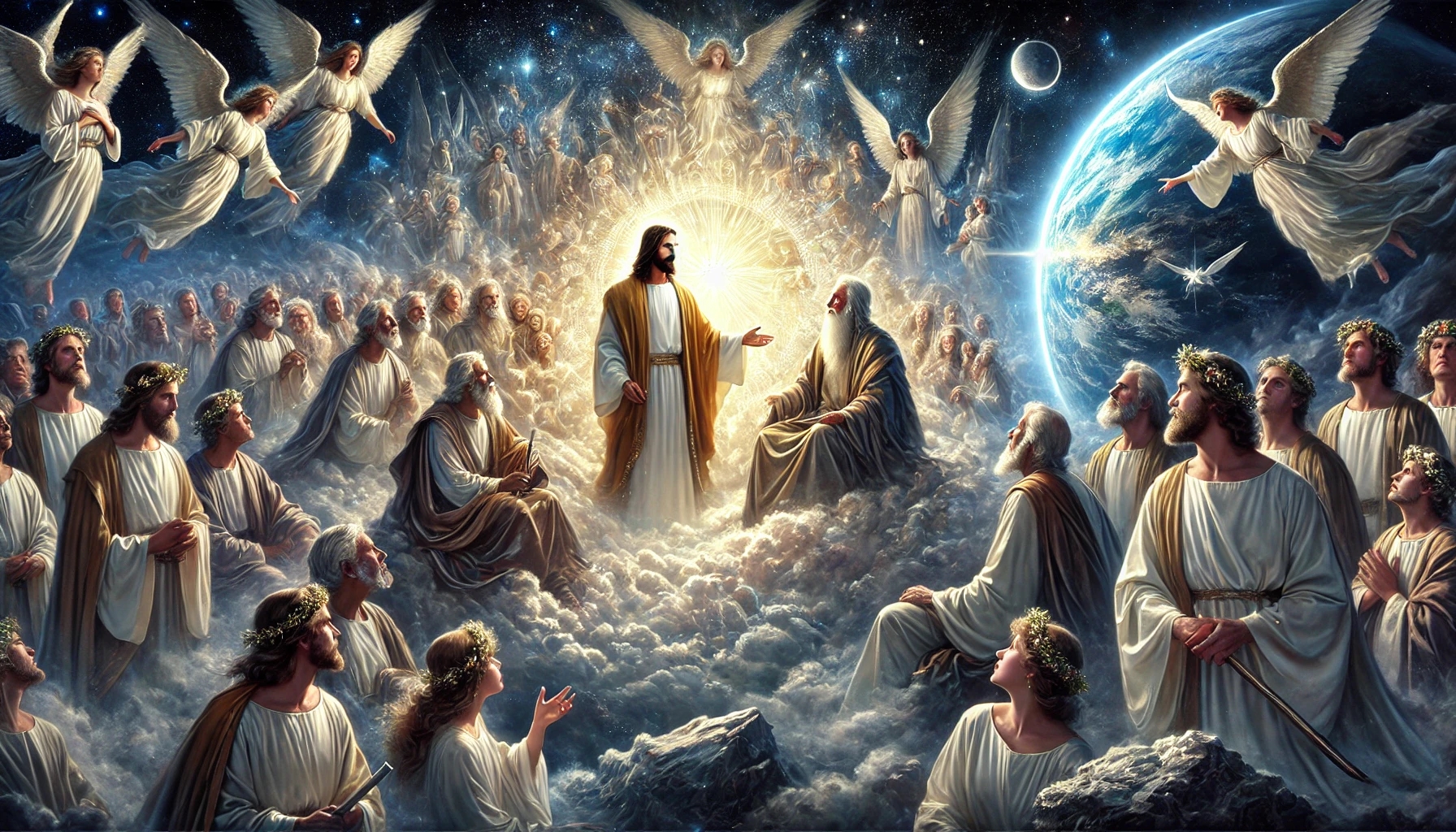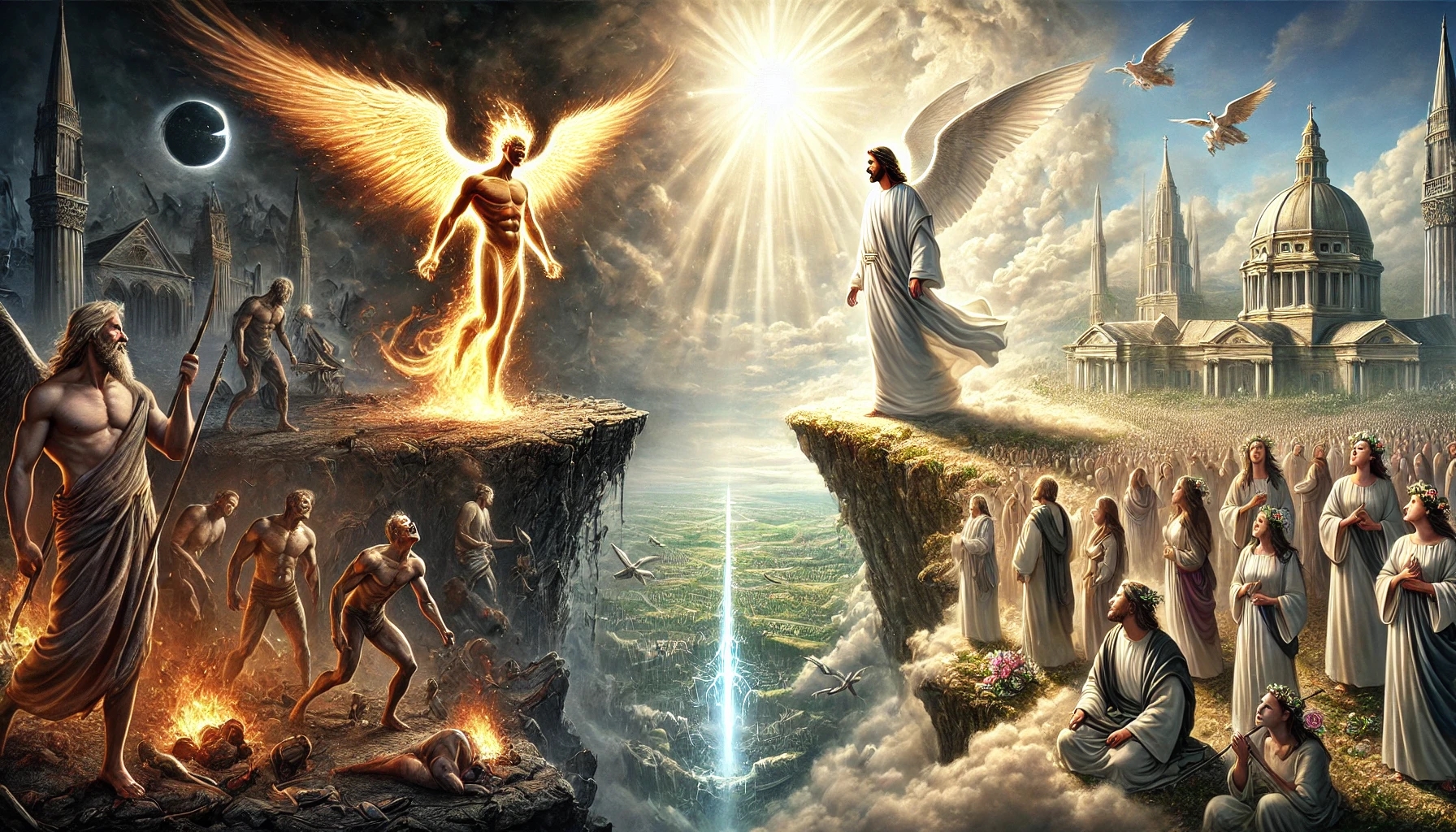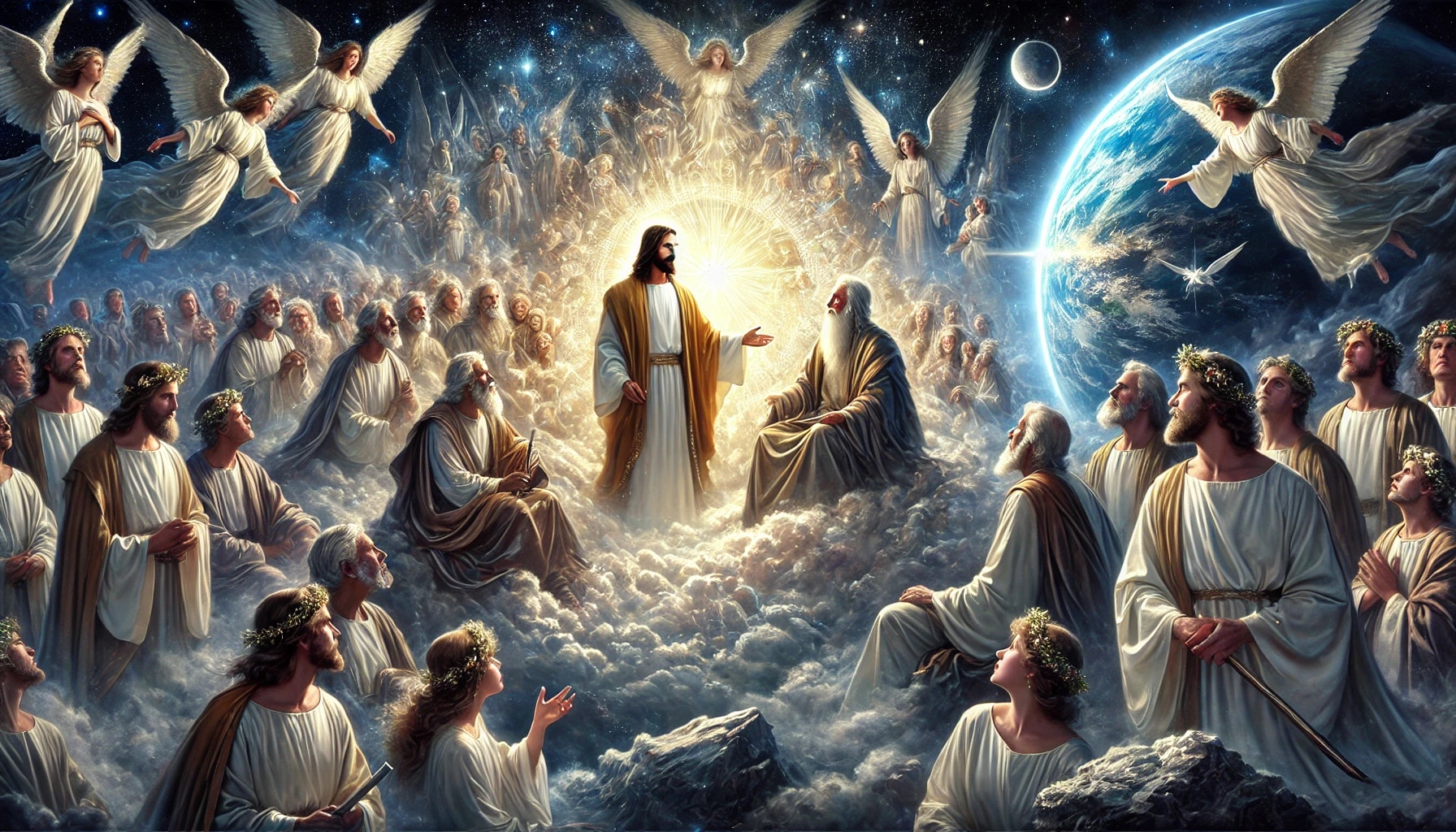

 Lesson 7: Foundations of Prophecy
Lesson 7: Foundations of Prophecy
7.6 Summary
When Heaven Touches Earth—God’s Voice in Prophecy
…………………………………………………………………
 Introduction
Introduction
The foundations of prophecy are not just ancient texts and visions that are hard to understand—they are invitations into divine reality. From Isaiah’s call to Lucifer’s fall, from the Tabernacle at Israel’s center to the glowing coal that purifies lips—each scene reveals something about God, humanity, and our destiny.
Across these lessons, a powerful panorama unfolds: the holy God calls, encounters, dwells among us, reveals Himself through angelic beings, and invites us to join His plan. The prophets saw God’s throne, were cleansed, sent forth, and confronted evil’s reality—while pointing to hope in Christ.
………………………………………………………………….
 Spiritual Principles
Spiritual Principles
-
God calls people into His presence and service—like Isaiah: “Here am I; send me!” (7.1)
-
Angels and cherubim reflect God’s nearness and holiness—they serve His throne and accompany His revelations (7.2).
-
God’s glory burns like coals of fire—purifying, powerful, terrifying, yet merciful (7.3).
-
God’s place is always at the center of His people—in Israel’s camp and in our hearts (7.4).
-
Pride leads to a fall, as with Lucifer; grace leads to exaltation, as with the redeemed on Mount Zion (7.5).
………………………………………………………………….
 Application for Daily Life
Application for Daily Life
-
Be open to God’s call. Don’t just say “Here I am,” but also “Send me!”
-
Honor God’s holiness. Let it order, refine, and transform your life.
-
Keep God at the center. Build your life around His presence, not work, money, or people.
-
Recognize the spiritual battle. Lucifer’s fall warns us; the Lamb’s victory invites us to hope.
-
Proclaim the gospel. You aren’t a mere spectator of Revelation—you’re part of it.
………………………………………………………………….
 Conclusion
Conclusion
Prophecy shows us not only the future, but God’s heart: His holiness, His nearness, His longing for fellowship with us. He calls ordinary people—like you and me—into His presence, cleanses them, fills them with His glory, and sends them to proclaim the gospel. We stand on the threshold between heaven and earth—and we may become part of a heavenly story.
………………………………………………………………….
 Thought of the Day
Thought of the Day
“God doesn’t call the qualified; He qualifies the called—and uses them to change the world.”
………………………………………………………………….
 Illustration – “Noah’s Encounter with Prophecy”
Illustration – “Noah’s Encounter with Prophecy”
It was an ordinary October week in Leipzig, but for Noah, everything felt wrong. At 28, he worked in media technology, had a small apartment, a stable routine—and a growing emptiness in his heart.
He used to believe. That was when he spent time with his grandparents—the smell of old wood in the country church, Grandma’s open Bible with margin notes. But faith had slipped into the background; technology ruled his days, and religion felt distant and irrelevant.
Until one day.
On the tram, Noah spotted a small poster: “Come as you are. God is calling you.” It was so simple, almost easy to miss—but something stirred in him. That evening he googled the slogan and found a Bible website. Almost at random he clicked on Isaiah 6:
“I saw the Lord seated on a lofty throne…”
He read slowly, then quickly, and suddenly he was there: seraphim with six wings, smoke filling the temple, and the cry, “Holy, holy, holy is the Lord.” He felt like Isaiah—small, unworthy, lost—and yet called.
Over the next days he dove into Ezekiel 1, with its strange cherubim—four faces, living wheels, eyes everywhere—and God enthroned at the center. Terrifying, yet beautiful. Not a distant God, but a mighty, holy God like burning coals, cleansing and judging yet saving.
That night, after one of his reading sessions, Noah dreamed: he stood in a vast camp of tents, each under a banner—lion to the east, man to the south, ox to the west, eagle to the north—with the Tabernacle of light at the center. Then the scene shifted to a mountain of light: the Lamb on Mount Zion, surrounded by white-robed people singing—a vision from Revelation 14. He realized: they were where angels once stood, not by virtue of perfection, but through the Lamb’s blood.
Then darkness, and he saw Lucifer himself—once a shining cherub who sought to be like the Most High, then cast down like lightning. At his fall, people now stood in his place—redeemed by the Lamb.
Noah woke in tears. Never had Scripture felt so alive. He sensed God calling him.
In the weeks that followed, he joined a church, started a small Bible study, shared his story. Then one Sunday a pastor asked him to share at the youth meeting. Noah hesitated—he wasn’t a theologian or a speaker. But he remembered Isaiah: God had purified his lips with coal and sent him out.
So Noah spoke. He told of his inner thirst, of Isaiah, the cherubim, Lucifer’s fall, and the Lamb’s victory. Afterward, two young people approached him. “You spoke of the Lamb,” one said, “I thought Jesus was just a childhood story. Now… He’s real.” Noah realized: that was his call—to tell the world that every person is invited to stand on Mount Zion, once held by angels, now redeemed by Christ.
 May 16, 2025
May 16, 2025 DAILY BIBLE READING
DAILY BIBLE READING Genesis 30 – Between Rivalry and Riches: Jacob’s Children and God’s Work Amid Human Weakness
Genesis 30 – Between Rivalry and Riches: Jacob’s Children and God’s Work Amid Human Weakness Bible Text – Genesis 30 (KJV)
Bible Text – Genesis 30 (KJV) Introduction
Introduction Commentary
Commentary Summary
Summary Message for Today
Message for Today ~~~~~
~~~~~
 May 11–17, 2025
May 11–17, 2025

 Lesson 7:
Lesson 7:  Introduction
Introduction





 May 15, 2025
May 15, 2025 DAILY BIBLE READING
DAILY BIBLE READING Genesis 29 –
Genesis 29 –  Bible Text – Genesis 29 (KJV)
Bible Text – Genesis 29 (KJV) Introduction
Introduction Commentary
Commentary Summary
Summary Message for Today
Message for Today ~~~~~
~~~~~
 May 11–17, 2025
May 11–17, 2025

 Lesson 7:
Lesson 7:  Introduction
Introduction






